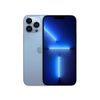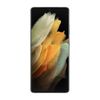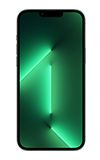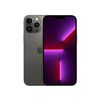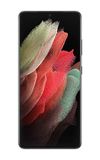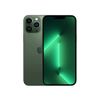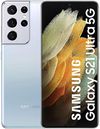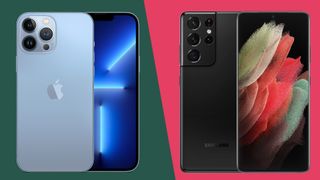
Apple’s iPhone 13 range is out now, and - as our iPhone 13 Pro Max review explains - this is the big and shiny flagship phone leading the charge, and it's the best iPhone you can buy.
But this isn't the only smartphone beast of 2021, because our Samsung Galaxy S21 Ultra review crowned this the early king of the 2021 smartphone scene, and ranked it high among the best Samsung phones.
We’ve reviewed both phones, and awarded both smartphone titans an impressive 4.5 stars, ranking them both among the best smartphones. So in our look at the iPhone 13 Pro Max vs Samsung Galaxy S21 Ultra, who comes out of this heavyweight clash on top?
iPhone 13 Pro Max vs Samsung Galaxy S21 Ultra: price and availability
The iPhone 13 Pro Max was released on September 24, 2021. Prices start from $1,099 / £1,049 / AU$1,699 for the 128GB model, while $1,199 / £1,149 / AU$1,869 will get you 256GB, and $1,399 / £1,349 / AU$2,219 will secure you the 512GB model.
There’s also a 1TB model this time around, which will cost you $1,599 / £1,549 / AU$2,569.
The Samsung Galaxy S21 Ultra appeared much earlier in the year, on January 29, 2021. The entry-level 128GB model starts at $1,199 / £1,149 / AU$1,849, while the 256GB model costs $1,399 / £1,349 / AU$2,149. Finally, the 512GB model increases that price to $1,599 / £1,549 / AU$2,449.
Perhaps surprisingly, then, the iPhone 13 Pro Max is the cheaper phone of the two right across the board - at least in terms of the standard price. But thanks to the Galaxy S21 Ultra’s greater age, you should be able to find it at a significant discount.
Get daily insight, inspiration and deals in your inbox
Sign up for breaking news, reviews, opinion, top tech deals, and more.
iPhone 13 Pro Max vs Samsung Galaxy S21 Ultra: design
Both of these smartphone designs are pretty iconic. The iPhone 13 Pro Max is a dead ringer for the iPhone 12 Pro Max before it, which itself represented a bold revamp of Apple’s design language.
We hadn’t seen flat, symmetrical surfaces like this since the iPhone 5’s heyday - or the original iPhone SE at least. It also uses shiny surgical-grade stainless steel for the rim, which is more premium than the aluminum used in the Galaxy S21 Ultra.
Indeed, the Galaxy S21 Ultra looks like a fairly typical Android flagship - right up until you flip it onto its front. That swooping camera unit is flat-out gorgeous, and makes the iPhone’s nondescript rear look rather dull by comparison.
The iPhone 13 Pro Max is definitely less comfortable to hold than its rival, too. As good as it looks, Apple’s industrial design rather digs into your palms, while Samsung’s persistence with a curvier design language proves easier on the hands.
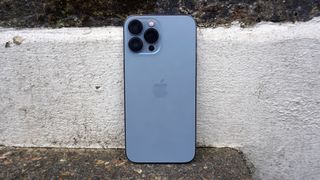
In terms of colors, the iPhone 13 Pro Max comes in Graphite, Gold, Silver and Sierra Blue. The Galaxy S21 Ultra offers up a wider selection of Phantom Black, Phantom Silver, Phantom Titanium, Phantom Navy, and Phantom Brown options. All are slightly muted, professional-grade shades.
These are two of the heftier phones on the market, though. The iPhone 13 Pro Max is 160.8 x 78.1 x 7.65mm and 238g, while the Samsung Galaxy S21 Ultra is 165.1 x 75.6 x 8.9mm and 228g. So Apple’s phone is shorter and slimmer, while Samsung’s is narrower and lighter.
Both phones come with an IP68 rating, which means they’re both good at resisting water and dust ingress (though the iPhone 13 Pro Max is certified to greater depths, of six meters to the S21 Ultra's 1.5). The iPhone 13 Pro Max also has a slightly tougher display, with Apple’s ceramic shield once again providing a four-fold increase in toughness compared to other phones.
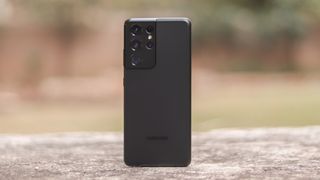
There’s a big difference in how these two phones treat the implementation of a front camera. The iPhone 13 Pro Max uses a chunky notch, albeit one that’s 20% smaller than before. The Galaxy S21 Ultra gives you a central punch-hole, which is rather less obtrusive.
It’s a shame Apple hasn’t used the extra pixels to give us some extra information, such as a battery percentage. But it’s a step along the road to a notchless future, so we’re reasonably happy with it.
iPhone 13 Pro Max vs Samsung Galaxy S21 Ultra: display
The Samsung Galaxy S21 Ultra’s screen is a 6.8-inch AMOLED, and can run at both a 120Hz refresh rate and a QHD+ (1440 x 3200) resolution simultaneously.
The iPhone 13 Pro Max has a smaller, less sharp 6.7‑inch 1284 x 2778 OLED screen. There really isn’t much in it when it comes to raw image quality.
However, for the first time, Apple can match Samsung with a 120Hz refresh rate of its own. Both phones use LTPO technology in order to apply a variable refresh rate.
This means that they can conserve power by scaling back from 120Hz when viewing static images or text. Both can drop as low as 10Hz, but only the iPhone 13 Pro Max has fully optimized its UI to respond to the speed of your touch.
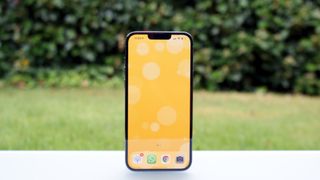
It will take a while for developers to catch up and update their apps and games to take advantage of this extra smoothness, while Android developers have been working with 120Hz displays for years.
The Samsung display gets a little brighter, with a peak figure of 1500 nits. The iPhone 13 Pro Max can ‘only’ hit 1200 nits.
Interestingly, we found that the iPhone 13 Pro Max’s display had a little more artificial ‘pop’ than older iPhones, which is a trait more commonly associated with Samsung phones. Both of these screens are extremely vibrant.
Samsung also stashes its ultrasonic fingerprint sensor, complete with 1.7x greater surface area than its predecessor, within that display. Apple has resisted re-implementing Touch ID in favor of its Face ID facial recognition system.
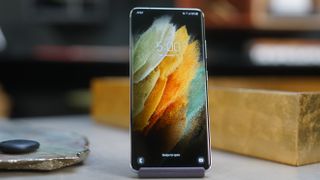
iPhone 13 Pro Max vs Samsung Galaxy S21 Ultra: cameras
Apple and Samsung have gone back and forth when it comes to camera mastery in recent years. Right now, they’re both near the top of the game, though they take very different approaches.
The new iPhone 13 Pro Max gives you an improved triple–12MP camera system, led by a main sensor with a wide f/1.5 aperture. This is backed by a 12MP ultra-wide that comes with a new macro function, allowing you to get as close as 2cm away from your subject.
You also get a new telephoto lens with a 3x zoom, and it’s capable of shooting in Night Mode now.
The Samsung Galaxy S21 Pro’s camera is led by a whopping 1/1.33" 108MP main wide sensor, which uses a 9-to–1 pixel binning technique to create crisp, bright 12MP images.
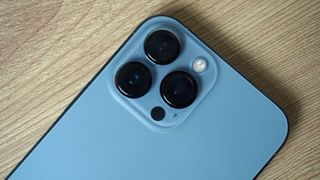
It also has its own 12MP ultra-wide sensor, along with a pair of 10MP telephoto sensors - one for 3x optical zoom, and the other for 10x.
Hardware differences aside, Apple and Samsung famously approach color science a little differently. Samsung typically punches its colors up to a more Insta-worthy level, while Apple keeps things a little cooler and more natural.
Talking of software, the iPhone 13 Pro Max includes a new feature that lets you select from different Photographic Styles, changing the Tone and Warmth without pushing the subject out of whack. You can even give your shots an extra dose of Samsung-like vibrancy, if you prefer the South Korean company’s approach.
You also get Smart HDR 4 with the iPhone 13 Pro Max, which can make adjustments for multiple people in a scene.

When it comes to video, the Galaxy S21 Ultra can capture in up to 8K at 24fps, while the iPhone 13 Pro Max can only hit 4K at 60fps. But again, Apple’s strength is in its algorithmic mastery.
That includes a new Cinematic mode that can intelligently refocus according to a subject’s gaze, as well as predict when a subject is about to come into view. Later in the year, ProRes mode will let you record, edit, and deliver broadcast-ready content on the go at 4K/30fps.
We’d have to pick the iPhone 13 Pro Max as the all-round camera champ here. It takes richer, more balanced shots in a range of lighting conditions, and it tops our list of the best camera phones.
With that said, the Samsung Galaxy S21 Ultra remains the zoom king, so if you like to shoot your subjects from afar it’s the phone to go for.
iPhone 13 Pro Max vs Samsung Galaxy S21 Ultra: specs and performance
Let’s not beat around the bush here. The iPhone 13 Pro Max is quite a bit more powerful than the Samsung Galaxy S21 Ultra.
Apple’s iPhones have been the most powerful in their class for some time now, and the iPhone 13 Pro Max’s A15 Bionic chipset continues that trend.
In a way, this comparison isn’t entirely fair. The Samsung Galaxy S21 Ultra falls closer to the iPhone 12 Pro Max than the iPhone 13 Pro Max in terms of its vintage, and it’ll likely take the Samsung Galaxy S22 Ultra to compete with the iPhone 13 Pro Max on power. Even then, we don’t fancy its chances.
Apple claims that its six-core CPU and five-core GPU are up to 50% faster than the leading competition on the Android side, which would presumably include the Samsung Galaxy S21 Ultra.
Sure enough, in our tests, the iPhone 13 Pro Max blitzed its rival when it came to frame rate, multi-core capability, and video transcoding speed. We’re talking almost twice as fast in some cases.
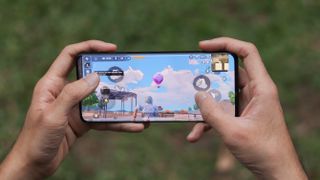
Samsung doesn’t really help itself on the performance front either. Depending on where you are in the world, you’ll either get a Galaxy S21 Ultra with a Snapdragon 888 chipset (in the US and China), or the Exynos 2100 (everywhere else). The latter isn’t a bad chip, but it’s not as fast as the Snapdragon 888.
In the real world, both phones feel extremely fluid. For general tasks, and even high-end gaming, you likely wouldn’t notice the difference. But if you’re buying your next phone to record high-quality video or work on high-power tasks – which is kind of what the whole Pro/Ultra phone concept is about – the iPhone 13 Pro Max will give more bangs for your bucks.
In storage terms, both phones give you a choice of 128GB, 256GB, or 512GB of internal capacity, but the iPhone 13 Pro Max also supplies a 1TB option.
The Galaxy S21 Ultra hits back with support for Samsung’s S Pen stylus. Whether you’re jotting notes for automatic transcription, or sketching a masterpiece, Samsung’s stylus is versatile and powerful. Apple has its own competitive Pencil, of course, but it hasn’t yet seen fit to add support for it to the iPhone range.
Both phones are 5G ready, as you might expect.
iPhone 13 Pro Max vs Samsung Galaxy S21 Ultra: battery
Samsung’s phone has a 5,000mAh battery, while the iPhone 13 Pro Max has been found to have a 4,352mAh cell.
That might be a lot smaller than the Samsung, but more importantly it’s a massive increase on the iPhone 12 Pro Max’s 3,687mAh equivalent, which had excellent stamina.
We say ‘more importantly’ because iOS and Android use the power allotted to them very differently. Apple’s phones are traditionally more efficient, resulting in smaller batteries.
Apple has claimed that the iPhone 13 Pro Max will get up to 2.5 hours of extra life out of a single charge compared to its immediate predecessor. Sure enough, we found the iPhone 13 Pro Max to have the best battery life we’ve ever seen from an iPhone.
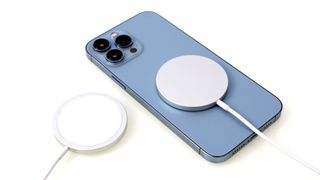
In a typical intensive day’s use, we found that we would go to bed with a third of a tankful of power. That’s some good going. Meanwhile, it lasted longer browsing the web on 5G than any phone we’ve ever tested, including the Samsung Galaxy S21 Ultra.
The Samsung Galaxy S21 Ultra is solid in its own right, however. It will get you through a full day of moderate usage with ease, even with a QHD resolution and 120Hz refresh rate operating away together.
Neither the iPhone 13 Pro Max nor the Samsung Galaxy S21 Ultra is the most advanced when it comes to recharging. The Galaxy S21 Ultra only supports up to 25W wired charging, while the iPhone 13 Pro Max only goes up to 20W.
Neither phone gives you a charger in the box, which is a little annoying given how much money you’re paying. We appreciate the environmental impetus here, but surely customers should be offered the option of a charger.
Both phones support up to 15W wireless charging, which again isn’t all that competitive with some of their Android-based rivals.

iPhone 13 Pro Max vs Samsung Galaxy S21 Ultra: takeaway
The Samsung Galaxy S21 Ultra is the iPhone 13 Pro Max’s biggest competitor, despite being closer in age to the iPhone 12 Pro Max. It’s been arguably the best all-round smartphone on the market for most of 2021.
Specs like a 10x telephoto camera and a QHD+ display continue to outdo Apple’s new challenger. However, the iPhone 13 Pro Max brings its own camera tricks to the party, with stunning low light performance and unmatched all-round shot consistency, not to mention one or two impressive new tricks.
The belated addition of a 120Hz display to the iPhone range successfully closes the gap to the Samsung Galaxy S21 Ultra’s stunning screen, though we’d still have to give the latter the edge on brightness and sharpness.
In performance terms, however, there’s simply no contest, with the iPhone 13 Pro Max blitzing through certain high-end tasks almost twice as quickly as its Samsung rival.
It’s tough to call an outright winner here, with both devices in the running for phone of the year. You could argue that the iPhone 13 Pro Max’s fresher vintage and powerful performance give it the edge, but in our best smartphones guide the Samsung Galaxy S21 Ultra has kept its crown.
And the real test will be whether Apple’s latest can stand up to the forthcoming Samsung Galaxy S22 Ultra. Stay tuned for another ding-dong battle in early 2022.
- We're already hearing about the iPhone 14
You might also want to check out the Samsung Galaxy S21 vs Samsung Galaxy S20 comparison.
Most Popular


